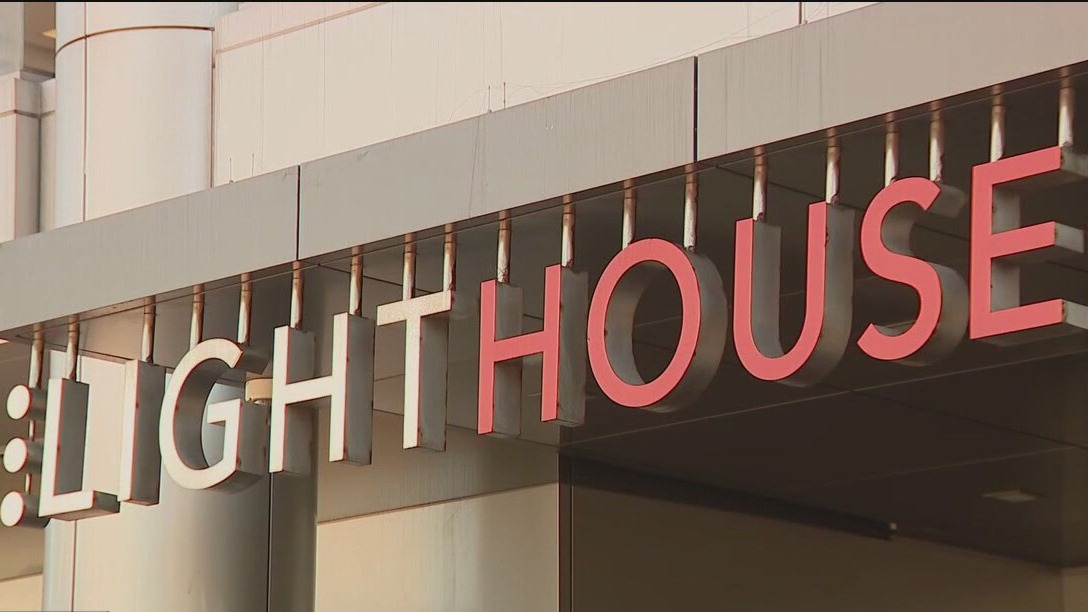
SAN FRANCISCO – Century-old powerhouse nonprofit Lighthouse for the Blind and Visually Impaired in San Francisco is under scrutiny by a community of its beneficiaries.
Members of the blind community are raising concerns that the organization will cease to exist under its current leadership.
The accusations range from misuse of funds, to violating labor laws, and while Lighthouse Interim CEO Brandon Cox admits the nonprofit is struggling, he said he shares a common goal with blind advocates: keeping the Lighthouse open for another century.
What began as a sanctuary for the blind, is now riddled with controversy
The backstory:
In 1902, Lighthouse for the Blind and Visually Impaired set out to help people in the blind community gain independence by teaching them life skills like using a cane, reading braille and providing educational and employment training.
The nonprofit also has businesses manufacturing and selling cleaning products, stocking and selling goods for the blind, and consulting tech companies for innovation which also employ low vision and blind people.
But the organization’s been operating at a deficit and year after year, the deficit grows.
Growing budgetary deficit affecting services
Lighthouse has laid off more than 50 people since November 2024, let go of multiple properties, and consolidated services and businesses.
In a 2024 audit, Hood & Strong reported “noncompliance with federal reporting requirements” and raised a red flag about the reliability of the nonprofit’s internal financial reporting system, with auditors encountering “delays in the receipt of accurate information.”
“It’s something that our board is taking full responsibility to hold leadership accountable to make sure that we get to a sustainable level of spending,” said Cox, agreeing there is a problem.
Cox reported a $16 million deficit this year, and said his team is currently making revisions to the budget, along with the help of the Board of Directors.
Board member Sharon Sacks said, “Over the course of the time that I’ve been on the board, we are in our third CFO, and some have been better than others.”
Cox and Sacks said more cuts are coming.
“It’s going to impact staff. It’s going to impact the community. It’s going to impact the leadership. “It’s going to impact all of us,” Sacks added.
Members of the blind community and its advocates led a demonstration outside the Lighthouse headquarters on Market Street in June, demanding the current leadership be replaced.
What they’re saying:
Margie Donovan, an organizer for the advocates, said the current leadership team lacks accountability and transparency.
Donovan, who is blind, said she’s been affiliated with the Lighthouse for decades, and has the nonprofit in her estate plans.
“We are extremely concerned about mishandling of funds. There’s been about six to eight of us who have filed for an investigation with the California Department of Justice,” she said.
Donovan hopes the Lighthouse will remain a beacon for the blind community for another 120 years and fears if things continue this way, it won’t survive.
“A fair amount of the money was spent in ways it should have never been spent,” she said.
The other side:
Ten years ago, a generous donor gave the Lighthouse $125 million, and the nonprofit used it to buy 1155 Market Street, occupying the top three floors as its headquarters and renting the bottom eight floors out, which earned the nonprofit about one million dollars in revenue each year.
It expanded services, started new programs, and hired more staff.
But since then, the organization had to rebuild its recreational campsite in Napa after a fire in 2017, the pandemic hit, and the city, the tenant renting the lower floors at 1155 Market, moved out after contentious negotiations failed.
“We were left holding the ball,” said Sacks.
Cox said salaries make up roughly 70% of expenses.
“We live in one of the highest cost of living areas in the country. We are committed to paying our staff appropriate market-level rates for them to live in this area and work in this and provide services here,” he said.
Advocates argue executive leadership salaries are too high, including Cox’s salary.
Cox responded to that with, “I can just say all the leadership of Lighthouse has already taken pay cuts.”
The problems, according to whistleblowers, date back years, and they’re not all financial.
Under FCC investigation for not fulfilling federal requirements
A former employee of the Lighthouse, Mussie Gebre, who is both deaf and blind, spoke to KTVU with the help of interpreter Aaron Brace.
Gebre said he was let go in September 2023 after he filed a complaint against the Lighthouse with the Federal Communications Commission.
Gebre said the nonprofit takes almost one million dollars annually from the FCC to provide equipment and train deaf blind people to use special technology to help them communicate.
“If people don’t have any kind of telecommunication access, they just stay at home, where they’re very isolated. They lose contact with their families, and they can’t call emergency services,” Gebre said.
He previously helped run the Lighthouse’s FCC-funded technology access program called iCanConnect, but said he reported the nonprofit for not keeping up with federal regulations and started a watch dog group called Decertify Lighthouse Now.
“The Lighthouse refused to hire enough staff, which kept deafblind people waiting for services for far too long,” he said.
A former manager who was part of the layoffs in April and said he wants to remain anonymous for fear of retaliation told KTVU on multiple occasions that he was scolded when he raised concerns about large risky financial decisions.
Other investigations
Donovan said multiple people have filed complaints with the state attorney general.
When KTVU reached out to Attorney General Rob Bonta’s office, his press team said, “To protect their integrity, we’re unable to comment on, even to confirm or deny, potential or ongoing investigations.”
San Francisco’s Enforcement of Labor Standards Office is actively investigating the Lighthouse for possible violation of labor laws, which the CEO said they aren’t aware of.
The organization also had to settle a lawsuit last year after a deaf interpreter sued for discrimination.
These circumstances all point to the same issue: critical services suffering and life-altering wait lists lasting up to six months.
“The lighthouse in San Francisco, it’s being led by a person who has ignored the deafblind community,” said Gebre.
The other side:
Cox said despite the financial woes, the impact on services has been minimal and alternative options have been offered to get around the wait times.
“We know that this mission must continue, so that’s why we’re having to make the changes that we are now,” he said.
Sacks said the board recognizes the challenges facing the Lighthouse, and it wants to work with the blindness community to move forward.
“I’m not excusing any of it. We’re in the situation that we’re in. We need to remedy it. We need to move forward,” she said.
What’s next:
Despite the battle cry from blind advocates, Cox reassured there are no plans for closure.
“Even if people are angry or upset, I completely understand. We’re doing everything that we can to sit down and meet with people and answer their questions,” he said.
The Lighthouse board is in the process of securing a search firm to eventually hire a new CEO.
Additional cuts and layoffs are expected in September, but Cox said anyone who is let go will be offered a severance package and benefits.
Meanwhile, the investigations by the City of San Francisco and the FCC are ongoing.
The Source: KTVU reporting, Interviews, The City and County of San Francisco, FCC documents, Hood & Strong
Featured
